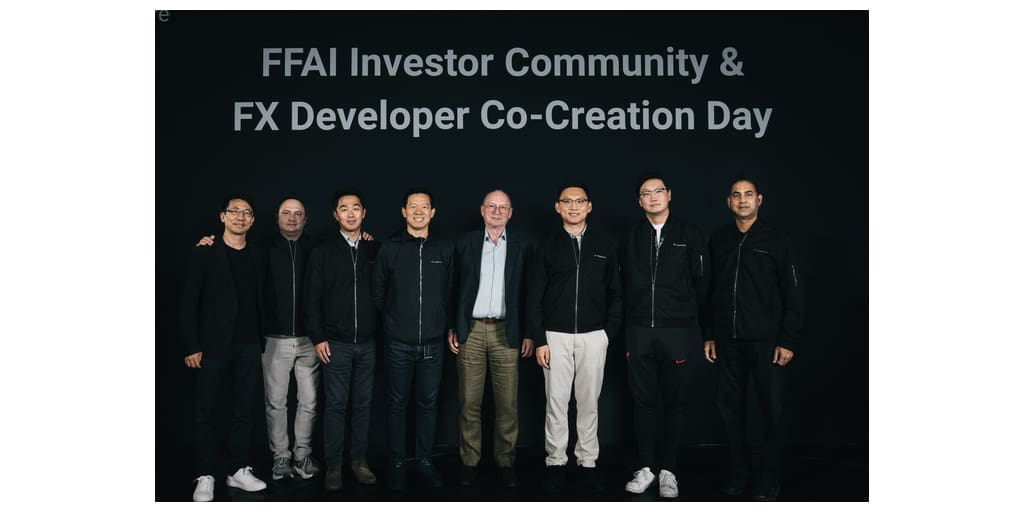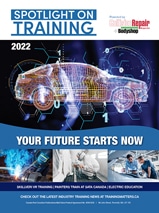- YT’s Additional Equity Incentives Tied to Market Cap and/or Stock Price.
- FF Enters Founder + Professional Manager Era with 10 Key Transformations for Company Success at Company’s ‘FF Stockholder Community and FX Co-Creation Day’ Held Today in Los Angeles.
- Business Targets: First FX Vehicle Off the Line by 2025 Year-End;
- Financial Targets: Achieve Positive Gross Margin and Operating Cash Flow and Move Toward Overall Profitability.
- Capital Targets: Put Stakeholders First, Restore Market Confidence, and Launch a Global AI and AIEV Tech M&A Strategy to Build a Global AI Vehicle Ecosystem.
- The Global Bridge Strategy Supports Restructuring of the US Auto Industry.
- Company to Fully Transform FF to Maximize Stakeholder Value Without Compromise; Stand Firm Against Illegal Short Selling.
LOS ANGELES–(BUSINESS WIRE)–Faraday Future Intelligent Electric Inc. (NASDAQ: FFAI) (“Faraday Future”, “FF” or the “Company”), a California-based global shared intelligent electric mobility ecosystem company, today announced that FF Founder and current Chief Product and User Ecosystem Officer (CPUO), YT Jia, has been appointed Co-CEO of the Company. YT will add finance, legal, and supply chain to his direct reporting lines with the current Global CEO of FF, Matthias Aydt, in addition to his current reporting lines. YT will share CEO duties with Matthias Aydt. This marks a fundamental change in top management structure and decision-making in the Company. YT also announced a series of key transformations he hopes will bring Company success. YT’s newly created equity incentive plan is directly linked to market capitalization and stock price.
Other speakers at today’s event included Lev Peker, FF Board Member, Chair of the Audit Committee & Independent Director at FF, Matthias Aydt, Jerry Wang, Global President of FF, Koti Meka, CFO of FF, Xiao (Max) Ma, CEO of the FX brand (via video), Lou Martinez, Mayor of Hanford (via video), Anthony Rendon, former speaker of the House for the State of California (via video), and Edric Guo, CEO and Head of the Investment Banking Division at Univest Securities. During the meeting, these leaders gave pertinent updates as well as congratulatory messages on YT’s appointment as Co-CEO. YT also gave a number of new business updates and key transformational aspirations for the Company.
A replay of today’s event with speeches can be found here: https://www.ff.com/us/FX-CoCreation/
Today’s event, the ‘FF Stockholder Community and FX Co-Creation Day’ was meant to further increase transparency and real-time communication with FF’s stockholders in an effort to close the information gap, eliminate misunderstandings, and highlight the Company’s fundamental progress. This event was a unique opportunity for all stakeholders to experience FF’s vision, value, and strategy firsthand. The event was held in conjunction with the Company’s employee all-hands meeting and was open to registered guests, including stockholders, followers and fans of FF.
“I’d like to extend my warmest congratulations to our founder, YT Jia, on his return to a crucial leadership role as Global Co-CEO of Faraday Future. This is not only a meaningful personal moment for YT, but also a defining one for the future of our Company,” said Matthias Aydt. “It was wonderful to have our valued stockholders, Developer Co-Creation Officer candidates, members of the global FF community, media, fans, and most importantly, our employees and their families joining us today at this event and along with YT’s appointment as Co-CEO, signals the beginning of a brand-new chapter.”
“FF is undoubtedly a pioneer in the global new energy industry, making significant contributions in technological innovation, talent acquisition, and the construction of a technological ecosystem,” said Anthony Rendon, former speaker of the House for the State of California, “FF’s Global Automotive Industry Bridge Strategy exemplifies the globalization and open cooperation spirit we advocate.”
In addition to the FF and FX product experience and Co-Creation, FF was actively recruiting FX Developer Co-Creation Officers during the event, inviting visionary partners to collaborate with the Company in shaping the development of FX product and technology.
The fully translated transcript of YT Jia’s Speech from the 4.24.25 FF Stockholder Community and FX Co-Creation Day follows below (the italicized text is added for highlights):
Introduction
Thank you to Lev and the Board for appointing me. Dear FF colleagues and friends watching online, welcome.
Today, I finally have the chance to reintroduce myself — this time, as the Co-CEO of Faraday Future. I feel a mix of emotions: it’s both a complicated and exciting moment for me.
Over the past four years, I’ve carried heavy burdens, and the company has gone through tremendous challenges and trials. Now, both our operating fundamentals and corporate compliance have improved. But once again, several days ago, our stock price has fallen below the one-dollar per share minimum required by Nasdaq. The need for deep transformation can no longer wait.
In a moment, I will announce a series of major transformations for both FF and FX. Together with Matthias, under our new Founder + Professional Manager model, and alongside every FF team member, we will fight to turn the tide. We will rebuild trust and confidence, firmly uphold the principle of putting large stockholders and individual stockholders first, and drive FF and FX toward success, creating maximum value for all stockholders.
Before getting started, I want to make clear that what I am going to say represents my personal views only and are not necessarily those of the Company as a whole or the Board.
Adding Finance, Legal, and Supply Chain to My Direct Reporting Lines, Marking Fundamental Changes in Top Management Structure and Decision-Making
From Founder and CPUO to Co-CEO, I am now entrusted with co-leadership and co-decision-making authority over three of the most critical functions in the company: Finance, Legal, and Supply Chain, now jointly managed with Matthias. My existing responsibilities will remain unchanged. With this adjustment, we have seen a fundamental shift in FF’s top-level organizational structure and decision-making dynamics. On the foundation of full legal and regulatory compliance, I will lead the creation of a more rigorous financial management system — including strict cost control and cash flow discipline — and build an efficient, cost-effective supply chain to accelerate the achievement of our strategic goals, reaching positive operating cash flow and profitability as soon as possible.
Additional Equity Incentive Plan Fully Tied to Stock Price and Market Cap; $1.2 Million in Promotion Bonus to Be Used for Open-Market Share Purchase With One-Year Lock-Up.
Today is our second Investor Community Day. I want to sincerely thank the stockholders who are here in person, and all those who continue to support us from afar. Without you, there would be no FF and FX today.
As Co-CEO, my additional new equity incentives are strictly tied to the company’s KPI on stock price market cap, and stockholder interest. It reflects the company’s unwavering belief in putting stockholders first.
Upon taking on the Co-CEO role, I am committing to use 100% of my after-tax amount of my $1.2 million promotion bonus to increase my personal stake in FF by purchasing shares in the open market during an open trading window when I do not possess material nonpublic information, with a one-year lock up. I will be one of you, stand shoulder to shoulder with you, and defend FFAI together.
To that end, the Board has adopted a transformative “Stockholders First” equity incentive for me as Co-CEO, which is divided into two phases.
Phase One:
For every $5 increase in the stock price, or every $700 million increase in market capitalization, I would be granted a 1% equity incentive, capped at 5% for this phase.
Phase Two:
After reaching a 5% ownership stake, for every additional $20 increase in stock price, or every $3 billion increase in market capitalization, I will receive another 1% equity incentive, with a maximum cap of 9% total.
These increases will exclude the impact of stock splits and stock dividends and, in the case of market capitalization, merger and acquisition activity.
To put it simply, in order to earn the full 9% equity incentive, FF’s stock price must exceed $106, which is around 100 times today’s price, or our market cap must reach around $16 billion. By that time, our stockholders would likely have seen exponential returns.
I will do everything I can to accelerate improvements in our operating fundamentals and lead the company toward our most critical strategic milestones. I’m confident that, together with the entire FF team, we will deliver on these milestones and create maximum value for our stockholders.
When this equity incentive is achieved, I will dedicate half of my earnings to repay my debts and fulfill my responsibilities under Chinese law. Returning home after clearing my debts is a mission I must accomplish. While legally I have no debt obligations under U.S. laws, my personal values compel me to act otherwise. I still remain committed morally and personally to fulfilling my responsibilities and giving creditors a proper resolution. I see this as my mission, and I will complete it. The other half, I will reinvest it into the FF ecosystem to help FF achieve even greater success.
Why Appointed Co-CEO Only Now? Four Years of Hardship and Instability Since IPO Point to the Return of the Founder Model as a Path Forward to Safeguard the Company and Deliver Value to Stockholders.
You may wonder: why did it take four years after the IPO for me to become Co-CEO?
To answer that, I need to go back to where it all started, when I first came to the United States. Many friends in the U.S. may not know much about me or the story behind FF. So today, I’d like to take a moment to share that.
In 2014, I was 41 years old, I came to the United States alone with the dream of revolutionize the industry. Personally, I invested nearly 700 million US dollars to start FF. It’s now been 11 years. Through countless setbacks and near-death moments, we survived. We fought tenaciously and survived. FF went public on the Nasdaq, delivered production vehicles, and launched our second brand FX serving mass market demands. Today, FF stands as one of the last four remaining new EV startups based in the United States.
But since I voluntarily stepped down as CEO over four years ago, FF has gone through wave after wave of trials and turmoil. Several days ago, Our stock has once again fallen below the $1 threshold. And we must face all the hard questions head on.
Some say that FF’s top-level management has long seen complexity, and that management has been chaotic. Some say that FF “got up early but arrived late”.
Some mock us for having built “only a dozen cars in ten years”, saying we’re all talk and never truly committed.
Some question whether the Global Automotive Industry Bridge can still hold under the storm of rising tariffs.
Some worry that the company will have to issue too many shares in order to raise funds.
Some are concerned about how long can FF’s cash last.
Some say that my personal debt is a burden to FF, and that I’ll never be able to repay it or return home.
Truth is, some of these concerns are valid, but many are also misunderstandings and distortions of facts.
So how did the company get to where they ended up today? We need to go back to when I stepped down as CEO and executive Chairman, right before FF went public.
“Stepping Down as CEO Is My Deepest Regret”
FF was preparing to go public in 2021, and there were all these voices constantly ringing in my ears, voices from the SPAC company, from financial advisors, and even from some of our own executives, all urging me to step back. They warned that if I were to remain CEO, my personal debt would impede our fundraising, our IPO, and the company’s future development.
At that critical moment, I gave in. For the sake of the bigger picture, I compromised. I resigned as CEO. I even idealistically believed that bringing in a new CEO, someone who loved the company and would fight for it as hard as I did, would create a powerful alliance, and perhaps that’s the best thing for FF.
But what happened next, many of you have seen with your own eyes. While the company did successfully go public, what followed was a nightmare. The group of bankruptcy directors from Wall Street joined forces with certain former executives and started the Day-One Plan. They inappropriately seized control of FF under the pretense of conducting an “independent investigation.” I, along with several core members of the Chinese founding team, were stripped of decision-making authority, some of us were even pushed out of the company. I was almost entirely excluded from final decisions. As a result, nearly $1 billion raised through the IPO was burned away, vehicle deliveries were delayed, and the stock price and market cap plummeted. We were literally one vote away from going bankrupt in the board meeting.
Ironically, it was once said that my debt would hinder fundraising, but quite the contrary, nearly 80–90% of the financing we secured still came directly through me, or because of me.
Yet I had almost no say in how those funds were used. I thought that by compromise and sacrifice, I was doing what was best for the company. I was wrong. What FF experienced instead was an endless series of crises and near-death moments. We found ourselves repeatedly on the edge of bankruptcy. A string of unthinkable disasters, like something out of a cruel novel that I would never be able to predict. But in the end, the FF Global Partner company, then serving as a major shareholder, fought through overwhelming challenges and helped bring FF back from the brink, restored order and defeated the so-called group of Bankruptcy Directors and brought FF back from the brink of bankruptcy. After those bankruptcy directors left, we saw some improvement in our fundamental operations and successfully delivered SOD2. However, due to a variety of lingering issues, the company still operates under a professional manager model, and top-level organizational complexities remain till this day.
After a lifetime of entrepreneurship, stepping down as CEO is my deepest regret. It turns out that I didn’t drag FF down. Truth is, after I resigned CEO, FF lost its greatest driver forward. It directly contributed to FF’s multiple downfalls and, most painfully, caused many who once believed in us to lose their trust. That breaks my heart.
FF is like my child. It carries my lifelong belief, my resources, my passion, my only remaining spark, after years of sacrifice, battles, and hard choices. I’ve invested nearly $700 million of my own money into FF, more than the personal investments of many of the most successful EV founders combined, including those behind Tesla and China’s leading EV startups. And yet today, FF’s market value sits at just around $100 million, barely one-seventh of what I personally put in. The disconnect between FF’s real value and its current valuation is staggering. Our value is far from being truly recognized. So, if we’re talking about losses, I am the one who has lost the most. And that’s exactly why I’m the one most determined to lead this company to success, where it belongs
But I don’t harbor resentment and have embraced these experiences, injustices, and even persecution. I believe this is the price I’m paying for past mistakes.
Over the past four years, the company lost the soul it should have had as a startup. During this time, I repeatedly expressed my interest in taking on more responsibilities, these efforts were not successful.
Today, I am grateful that the board for making this significant decision during such a critical time. I believe this signals they recognize the founder’s model and spirit can be major fundamental driving forces of a startup. II believe it also suggests an acknowledgement of my past successes and failures as valuable assets, which are the only path to save FF and bring value to shareholders and investors. I thank the Board for making this significant decision during such a critical time. This isn’t for me; it’s for FF and to regain the lost trust.
FF still in crisis — not the old kind; post-rescue, time to break through
Fortunately, this crisis is unlike those in the past. This time, the challenges stem mainly from broader market downturns and other external, uncontrollable factors — rather than internal issues. I believe these conditions have contributed to FFAI’s stock price dropping below the $1 threshold, which might trigger a compliance issue. Yesterday when we are running rehearsals, stock price was still below one dollar.
In contrast, I believe that the company’s operational performance and capital structure are currently at their strongest in recent years.
This progress is largely the result of the six key initiatives we launched in May last year under the “Battle to Safeguard FF Dreams” strategy, which led to significant improvements in FF’s business and financial fundamentals. At one point, our stock price surged over 100-fold, with single-day trading volume hitting $3.1 billion. The number of U.S. retail shareholders grew exponentially, and the media even hailed FF as the only “meme stock king” bridging Chinese and American retail investors.
Last year was about survival and self-rescue. This year, we’re standing at the threshold of a true breakthrough. While some may see the current stock price pressure as a crisis, we believe it could be the ideal moment to unlock FF’s “second growth curve.”
Root cause: long-term complexities in top leadership
Looking back at the true root cause of FF’s stagnation over the past four years, the surface-level issue may appear to be financial challenges. However, I believe the underlying issue has never been money. Instead, I believe it lies in the complexities within the company’s management structure.
For the past four years, I only held advisory rights, not decision-making power for three of the most critical decision-making functions at FF — Legal, Finance, and Supply Chain. Legal is essential for corporate compliance, but it was often used as a political tool. Finance, the foundation for resource allocation and the company’s value. And the Supply Chain, the most crucial area for cost control, represents a significant portion of the company’s expenses.
Over the years, many have blamed me for FF’s problems. However, no matter what position I held or what transpired, as the founder, I’ve always been the biggest “scapegoat,” repeatedly stepping up to take responsibility.
Today, I can say with confidence that things have changed. The Day One Plan and their aftermath have finally come to an end.
We have an advanced AIEV technology foundation, and, even more importantly, we are proud to have a dedicated and skilled workforce. However, it is important to acknowledge that our employees have also been impacted by the challenges and distortions within our management structure. Many of them have been with FF and FX for five or even ten years, making them the company’s most valuable asset. It’s now my responsibility to ensure their hard work translates into real value for the company — and that everyone recognizes their contribution.
Determined to lead FF, revive the glory of LeEco.
Some may ask, “What makes you believe you can lead FF to success?” Others have questioned whether the failure of LeEco tarnishes my record.
To that, I want to say quite the contrary, my experience with LeEco was the most expensive lesson of my life — but it is also one of FF’s greatest assets today.
Over a decade ago, LeEco built the world’s one and only comprehensive ecosystem spanning eight major sectors: cloud computing, content, television, smartphones, cars, sports, finance, and the internet. LeTV.com became the world’s first video streaming platform to IPO. LeTV Super TV became an industry leader within just three years, and LeTV’s smartphones sold 17 million units in their first year, nearly tripled the 6 million units sold by the iPhone in its debut year. LeTV Mall was once among China’s top three e-commerce platforms. At its peak, LeEco employed over 20,000 people worldwide.
We were at the forefront of the industry — twice:
First, with LeEco, the world’s most successful internet ecosystem companies.
Again, in 2017, at CES, when we launched the FF91. At the time, its influence in the industry was nothing short of Tesla. Following Tesla’s electrification revolution, FF propelled the entire new energy vehicle industry from electrification to intelligence.
But not long after, I became the one who fell from the highest peak to the deepest valley, and paid the heaviest price.
I want to take this opportunity to express my deepest apology to everyone who once worked at LeEco, and to all those who supported it.
I am committed to turning all of my past entrepreneurship and life experiences into the driving force that will lead FF to success. With FF and FX’s success, I will regain the trust I once earned.
FF Enters Founder + Professional Manager Era; Commits to Individual Stockholder First Strategy and New Business, Financial, and Capital Goals; Targets Tens of Thousands FX Units Sold Within Two Years of Mass Production
So the question is: how will we lead this company to true success?
Today I am standing here, also marking the era of “Founder + Professional Manager” is beginning at FF. We are announcing three major targets for FF in 2025 and 2026.
Business targets: First FX Vehicle Off the Line by 2025 Year-End; Tens of Thousands FX Units to Be Manufactured and Sold Within Two Years of Production
The first one is Business target. In 2025, the company will leverage the momentum of the Ultimate AI TechLuxury FF 91 to empower FX, swiftly launch development of three FX vehicle programs to seize blue ocean market opportunities, and secure that our first FX vehicle could get off the line by year-end, build FX Super One as the top choice of AI MPVs in the United States, and reach tens of thousands units sold within two years of FX mass production, subject to securing the necessary rights and funding.
On the sales and user ecosystem front, we kicked off the refundable paid pre-order collection campaign, supported by our user acquisition and operation system, with Ecosystem Co-creation Online Direct Sales and AI platform at its core. The total refundable pre-order volumes could cover the entire 2026 and 2027 production capacity. This would build a strong foundation for rapid ramp-up, striving to make every FX model a hit product, or even a super hit product.
In terms of product technology, we are going all in on AI, accelerating development at full speed across our super AI Hybrid Extended Range (AIHER) system and its technology, AI cabin, and aiDriving platform. Our goal is to equip FF and FX products with super AI capabilities, disruptive product power and technology power.
As for the Middle East strategy, we aim to kick off FX manufacturing and sales in the region as soon as possible, reinforcing its strategic position as the third pole for FF.
Financial Targets: Strive to Achieve Positive Gross Margin and Operating Cash Flow As Soon As Possible, and Move Toward Overall Profitability
On our second major target, the financial target, through the gradual realization of our business objectives, we will strive to achieve a positive gross margin in the short term, reach positive operating cash flow as soon as possible, and further push toward overall profitability.
At the same time, we will continue to strictly control expenses and costs, focusing on core operational areas to provide solid support for strategic execution.
Financial compliance is the foundation.
Contacts
Investors (English): ir@faradayfuture.com
Investors (Chinese): cn-ir@faradayfuture.com
Media: john.schilling@ff.com























